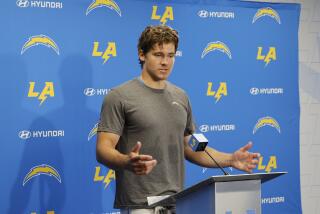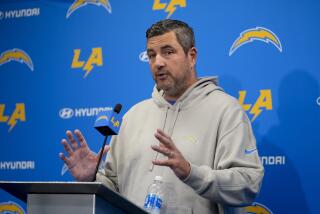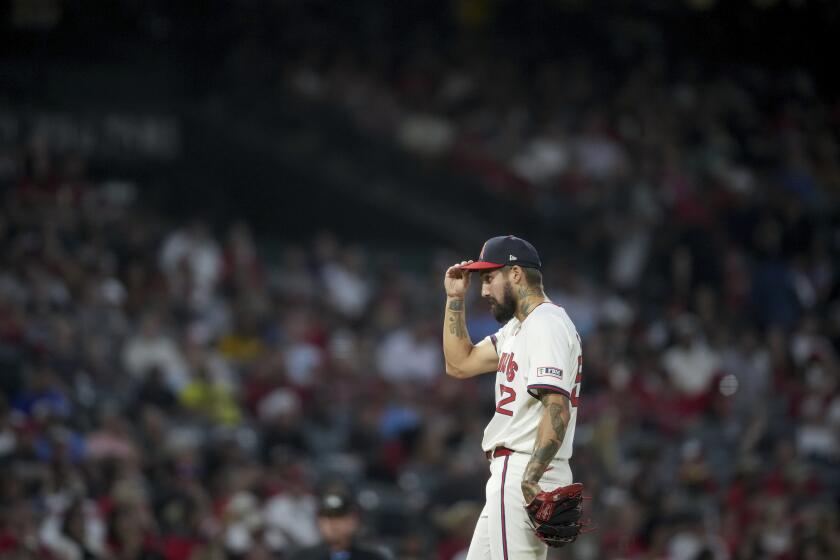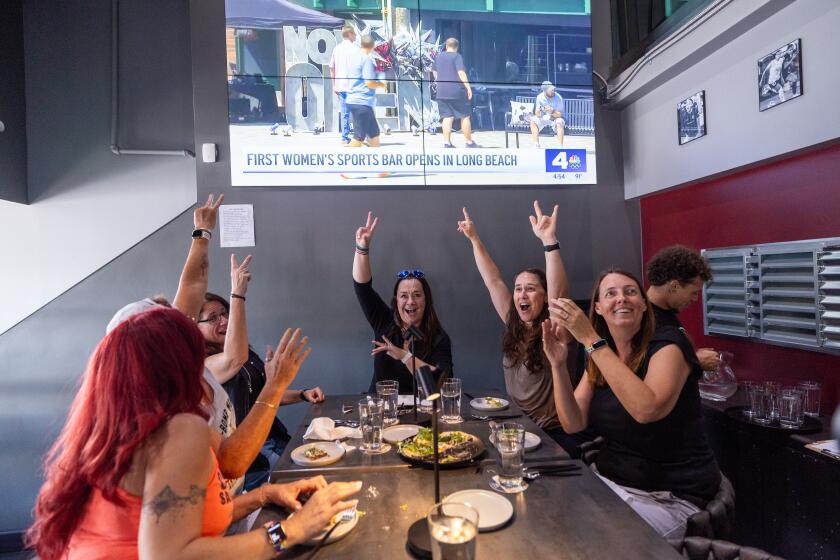NFL’s new kickoff rule is meant to improve player safety, but competitive edge remains to be seen

Nick Dzubnar isn’t sure how the NFL’s new kickoff rules will play out this season, but the Chargers special teams maven is certain of one thing: Teams that find an advantage in September won’t have much of an edge come October.
“It’s a copycat league, and if it works for someone, someone else is going to do it,” said Dzubnar, a reserve linebacker who plays on the kickoff and kickoff return teams. “Right now, there’s a learning curve. People don’t have a 100% idea of what they’re going to do or how it’s going to be defended.
“With any new rule, people will test the boundaries and limits of what you can get away with. I’m gonna try to cheat the system as much as I can to find leverage this way or that way. We’ll see how it plays out.”
The new rules are designed to make the game safer by reducing the number of full-speed collisions that have made kickoffs the most dangerous play in football.
The changes for kickoff teams are minor. The 10 non-kicking players will be required to line up one yard behind the 35-yard line, eliminating the running start. Five players must be on each side of the ball, with at least two outside the numbers.
“You have to stand and start, so you’ll want explosive, quick-twitch athletes going into coverage,” Chargers special teams coach George Stewart said. “You’ll want to get more speed in there.”
The changes for return teams are more drastic. Eight players will now begin kickoffs in a 15-yard “setup zone” between their 40-yard line and the opponents’ 45-yard line, forcing blockers to run down the field with the coverage team.
That leaves only three return men from the 40-yard line back, a trio that will be required to cover 2,133 square yards — or 19,200 square feet — not including the end zone.
“That’s a lot of ground for three guys to cover,” Stewart said. “There will probably be some sky kicks, teams trying to kick to open areas, get the ball bouncing on the ground and force a cheap turnover.”
Speed and good hands will be priorities for return men. Chargers defensive back Desmond King and receiver J.J. Jones were competing for the primary return spot in the preseason. They will be flanked by running back Austin Ekeler and possibly receiver Artavis Scott and running back Detrez Newsome.
KICKOFF TEAM
— Five players on each side of the ball, with at least two players outside the numbers and at least two between the numbers and hash. No running start.
RECEIVING TEAM
— No blocking in this zone between the 35- and 50-yard-lines before the ball is touched or hits the ground.
— At least eight players must be in the 15-yard setup zone.
— Only three players can remain outside the setup zone.
— No combination blocks, not even with two players.
— If the ball hits the ground in the end zone without a player touching it, it is an automatic touchback.
-------------------------------------------------------------------------------------------------------------------
Pharoh Cooper will be the Rams’ primary return man. The team experimented with different groupings in the other two return spots during the preseason.
“There are a lot of gaps on the back end, so you have to have guys with the ability to catch the football,” Stewart said. “Before, you had those wedge-blocking guys. Now, you’ll need more speed.”
Players can still return kicks out of the end zone, but if the ball hits the ground in the end zone before it’s touched by a player, it is an automatic touchback.
There is no blocking in the 15-yard setup zone prior to the ball hitting the ground or being touched. The league hopes this will eliminate vicious blindside hits.
Wedge blocks will no longer be allowed, so two players on the return team can’t gang up on one player from the kickoff team.
Many expect kickoff returns to resemble punt returns, with blockers running down the field with the coverage team before picking up their assignments and engaging their opponents.
“It’s going to be a bunch of one-on-one blocks, there are no more wedges,” said Ekeler, who also plays on the kickoff team. “It’s going to come down to each person [holding their blocks]. You have to trust your teammates.”
Missed assignments on the return team could lead to the kind of hits the NFL is trying to eliminate.
“It’s going to be interesting,” Dzubnar said. “Everything they’re doing is to try to protect the players, but with eight guys up front on the return, they’re going to have to run back really far, and that’s when you can lose the guy you’re supposed to be blocking. You’re going to have guys coming in scot-free, and that’s where the big hits come from, in my opinion.”
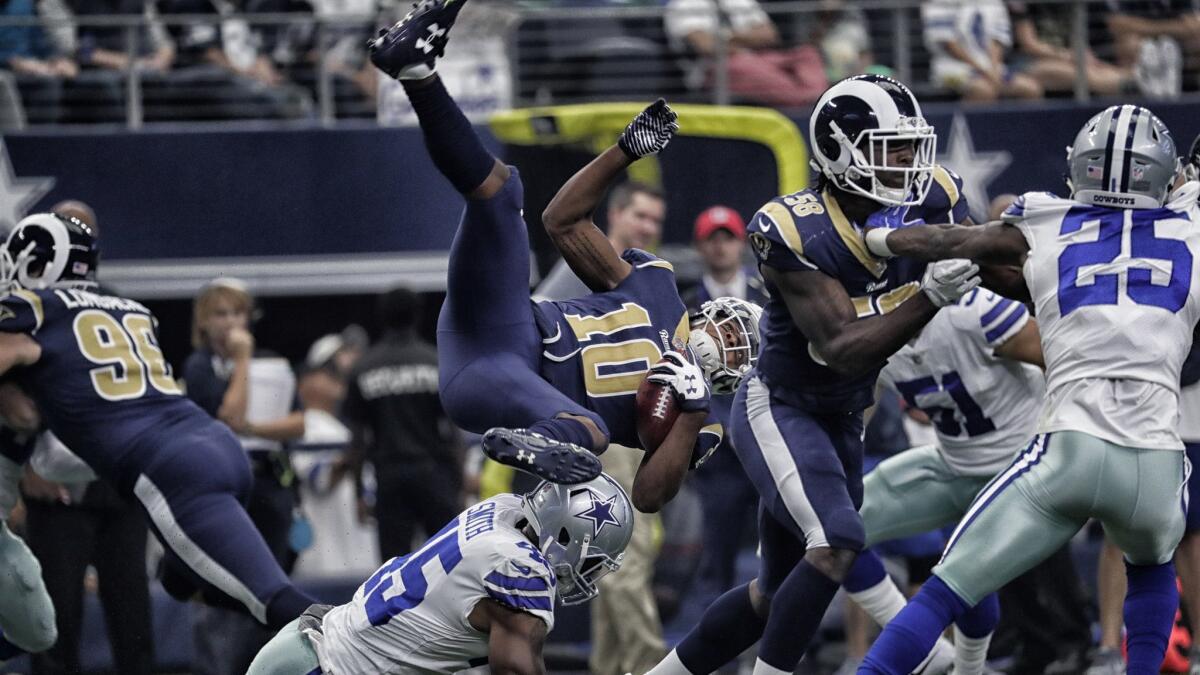
Ekeler expects teams to align their return trio in a triangle, with the primary returner in the middle of the field near the goal line and the secondary return men on both sides of the field, near the 20-yard line.
“If you put two guys back deep, it might be too much space in that middle area,” Ekeler said. “That could leave you susceptible to a sky kick.”
The Chargers didn’t see any sky kicks in the first two exhibition games, “but I’m sure every team is installing it, just to see what it looks like,” Ekeler said.
Directional kicks — deep kicks toward the sidelines that push return men into a corner — could increase. Teams preferring a touchback will continue to kick the ball as far as possible. Some believe the new rules will lead to more touchdown returns.
“It’s going to completely depend on the game plan,” Dzubnar said. “If you have a lethal weapon in the back, you may not want to kick to him.”
Those plans could change — dramatically or subtly — depending on what happens in the first few weeks of the season.
“It’s going to be a free-for-all, I think, for the first month on kickoff and kickoff returns, which is fun,” Rams special teams coordinator John Fassel said. “People will see stuff and be like, ‘Oh, that was a good idea,’ or, ‘Maybe we shouldn’t do this,’ and kind of start molding.
“But the first month is going to be pretty awesome on those two phases of the game.”
More to Read
Go beyond the scoreboard
Get the latest on L.A.'s teams in the daily Sports Report newsletter.
You may occasionally receive promotional content from the Los Angeles Times.

